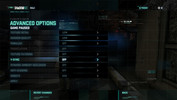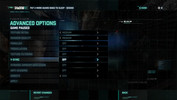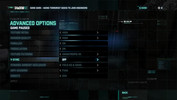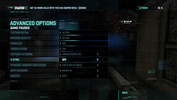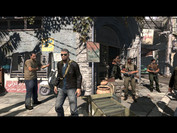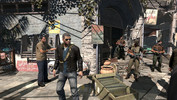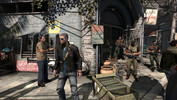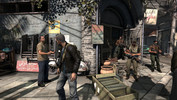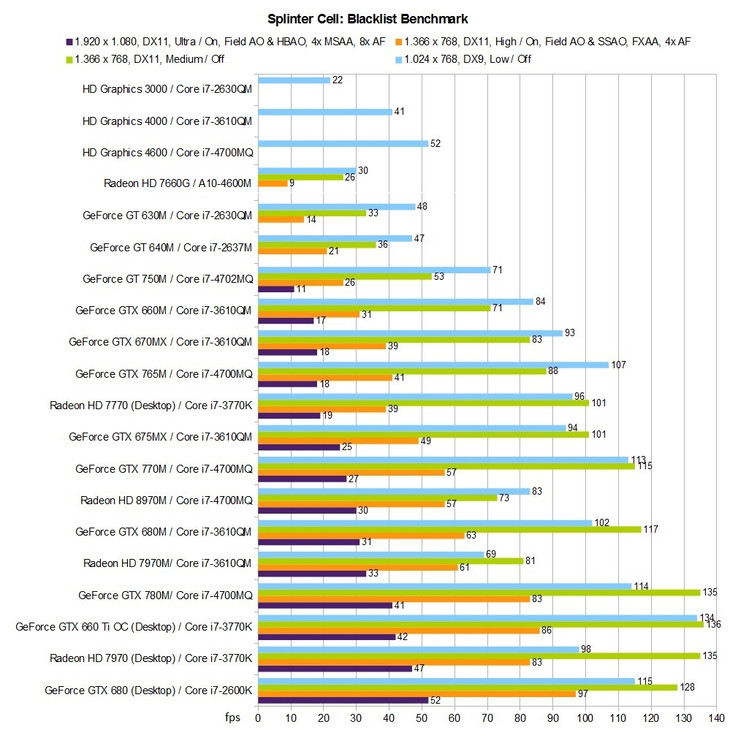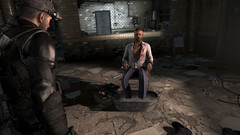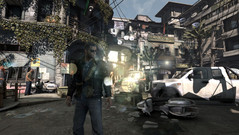Splinter Cell: Blacklist Benchmarked
For the original German article, see here.
Graphics
Despite its cliché and rather uninspired terror story, Blacklist is a thrill from the first minute. However, the atmosphere is not the only reason the new Splinter Cell installment is interesting -- it plays nicely too. The game's controls function surprisingly fluidly and require a certain expertise, at least at high levels of difficulty. Ubisoft manages a good compromise between hardcore stealth and more widely accessible action components.
Like the recently reviewed The Bureau: XCOM Declassified, Blacklist also uses the extremely successful Unreal Engine. In this case not version 3, "just" version 2.5, but heavily modified by the developers. As a result, Blacklist has support for DirectX 11 and numerous graphics features.
These features include tessellation, parallax mapping and ambient occlusion (field AO, SSAO & HBAO), as well as anti-aliasing modes FXAA, MSAA, SSAA and Nvidia's exclusive TXAA. The expanded graphics menu also has controls for texture sharpness, shadow quality, texture filtering and vertical synchronization. With the exception of the DirectX option, all changes are adopted immediately, though you sometimes have to reload from the most recent save.
Basic settings like Display Mode, Resolution, Frame Rate and Aspect Ratio are located in the "Basic Options" menu. Here you will also find various presets, though we did not use them for our benchmarks. While some graphics options do not cost hardly anything in terms of performance, some of them make a considerable impact on the game's speed. Anti-aliasing proves to take an especially high toll on the performance.
Overall, the graphics make a good, though not phenomenal impression. For one thing, some textures aren't particularly sharp. For another, the game is plagued with a variety of bugs. During our tests, we ran across the following issues:
- On a desktop system, the installation aborted with an error message ("missing files"). Verifying the game files solved the problem.
- Every once in a while, the game crashed for no apparent reason.
- The presets like to plug in strange values (e.g. 4x MSAA on High and FXAA on Ultra).
- On Nvidia systems with Optimus technology, the driver/game launcher has to be set to "high performance", otherwise Blacklist will run with the Intel GPU.
- In DirectX 11 mode, the game often fails to start properly. In our experience, changing the window mode, resolution or display can help.
- High-end graphics cards sometimes work slower in DirectX 9 mode than under DirectX 11 (not necessarily a bug).
- The frame rate varies more than it ought from one game situation to another.
- The system brings up an error message when an Intel chip is in DirectX 11 mode ("out of memory").
- The Radeon HD 8970M did worse with the beta driver Catalyst 13.8 than the weaker HD 7970M. Using Catalyst 13.4 instead brought the two cards' scores much closer together.
Benchmark
We used the beginning of the first campaign mission ("Safehouse") for our benchmark sequence. The sequence takes place in Benghazi/Libya. The high density of people and objects makes the passage good for speed measurements. You can see the nice light, shadow and mirror effects in the video below. As is true of most third-person titles, 30 fps proves to be enough for a decent gaming experience.
Results
Owners of low-performance office notebooks that lack a dedicated graphics card will have to make do with low resolutions and low levels of detail. While the HD Graphics 3000 cannot reach a fluid speed, in DirectX 9 mode (1024x768) the HD 4000 and the HD4600 manage just over 40 and 50 fps, respectively.
For medium settings and 1366x768 pixels, you will need a graphics card from the multimedia segment. Nvidia's popular GeForce GT 630M comes to about 30 fps in DirectX 11 mode. For high details, activated parallax and tessellation effects, ambient occlusion and FXAA, the game demands a high-end graphics accelerator (starting at the GeForce GTX 660M).
1920x1080 pixels, maximum settings and 4x MSAA make even today's top models break into a sweat. Only cards from the GeForce GTX 680M on up have enough power to handle that.
Verdict
In its current state, Blacklist seems to us like it is not quite a finished product. Ubisoft should have tested the engine a little longer and dealt with more of their bugs. If you are lucky and the game runs flawlessly, there is not quite so much to complain about. Powerful all-round or gaming notebooks will guarantee nice visuals.
Test Systems
Our primary test devices are courtesy of Schenker Technologies (mysn.de):
- W503 (Core i7-4700MQ, 8 GB DDR3, GeForce GTX 765M, GTX 770M, GTX 780M, Radeon HD 8970M & HD Graphics 4600)
- M503 (Core i7-4702MQ, 8 GB DDR3, GeForce GT 750M)
- XMG P502 (Core i7-3610QM, 8 GB DDR3, GeForce GTX 660M, GTX 670MX, GTX 675MX, GTX 680M, Radeon HD 7970M & HD Graphics 4000)
- Xesia M501 (Core i7-2630QM, 8 GB DDR3, GeForce GT 630M & HD Graphics 3000)
A further thank you goes to Crucial for providing the 480 GB M500 on which Windows 7 Professional 64-bit is installed.
GPU drivers used: Nvidia 326.80 Beta, AMD 13.8 Beta2 (13.4 @ HD 8970M), Intel 9.17.10.3223 and 9.18.10.3165.











